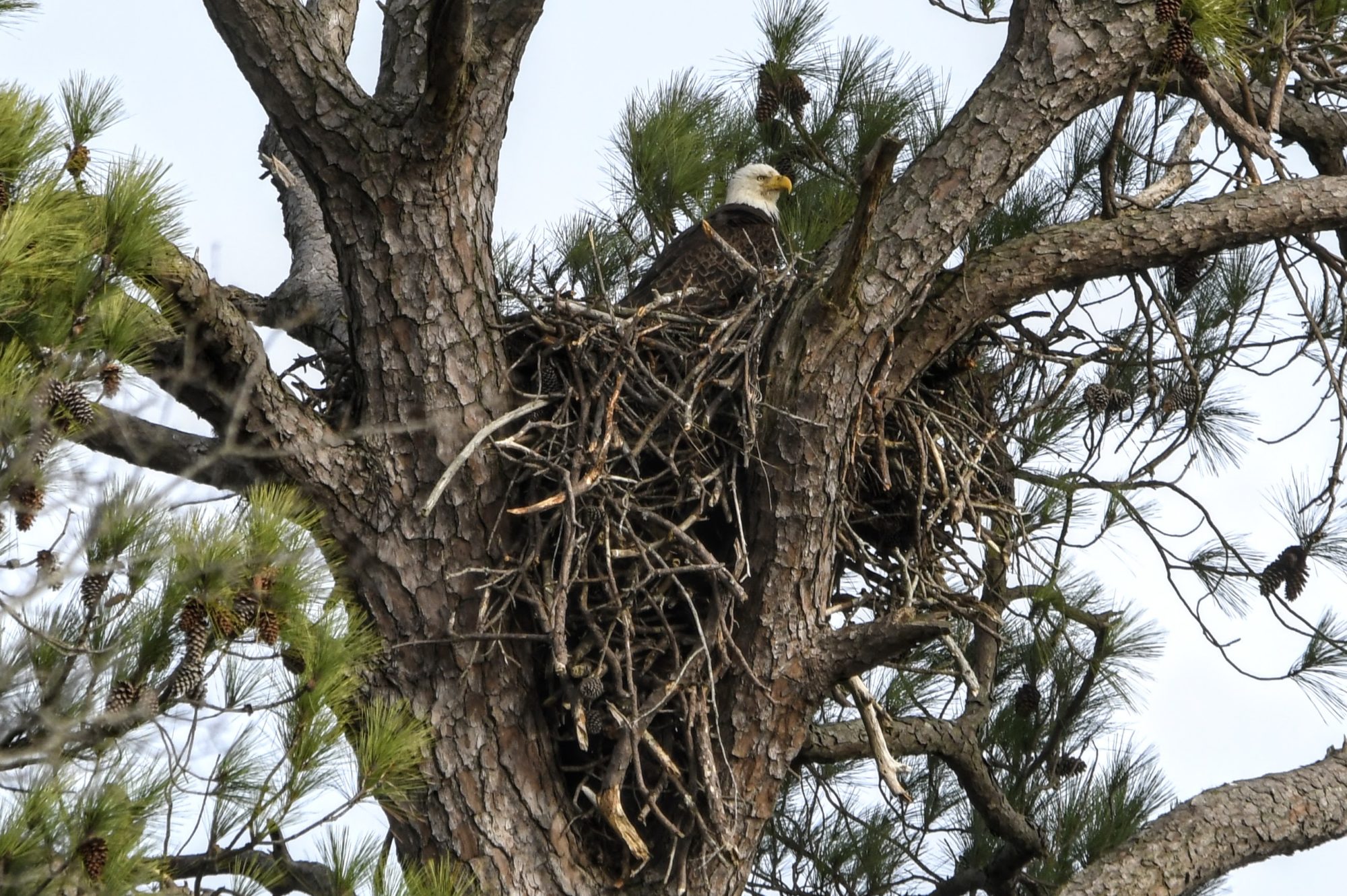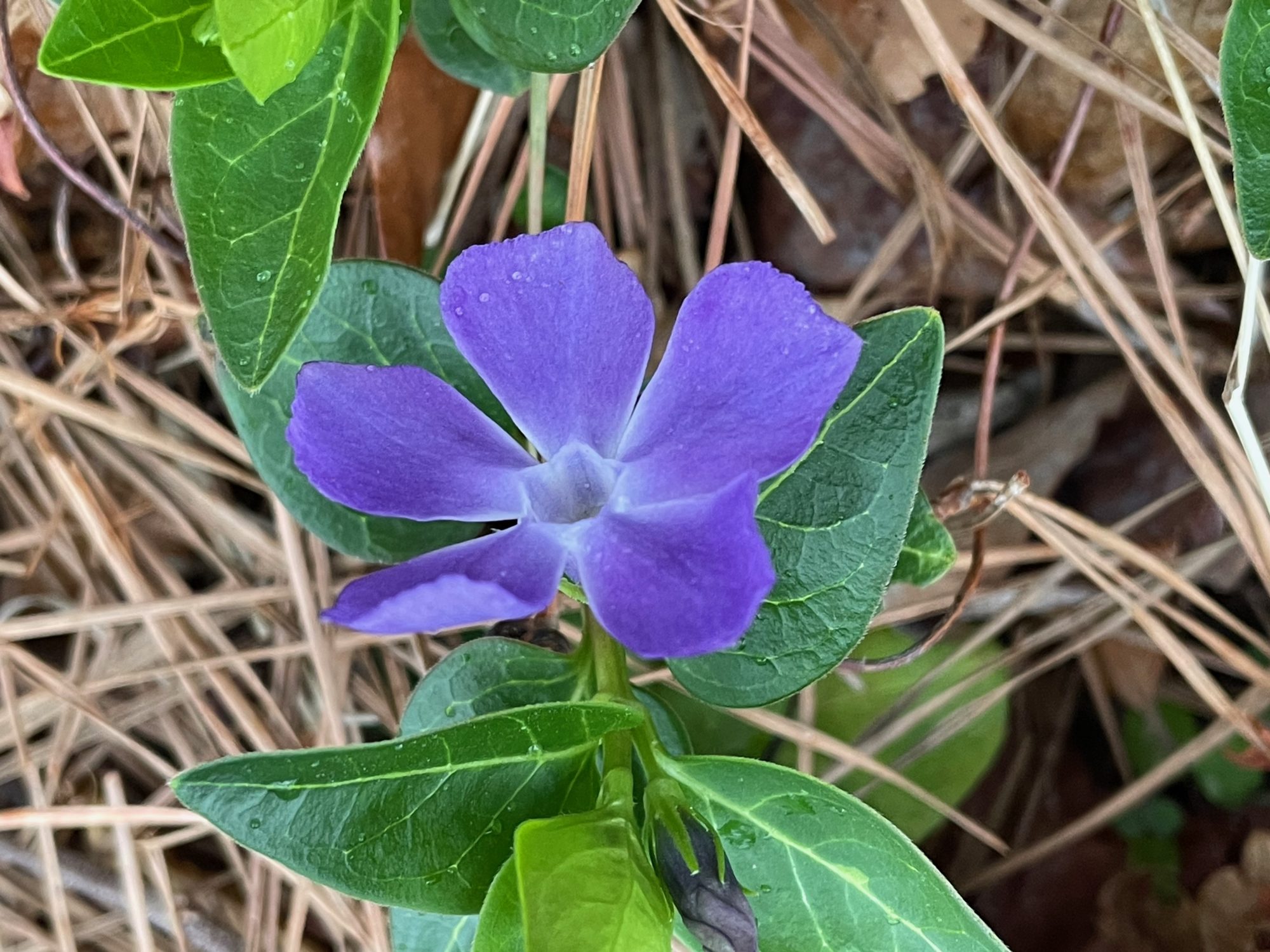By Mary Reid Barrow
Colorful painted buntings at Beach Garden Park
Stop by the ball field at Beach Garden Park for a different kind of sight, not batters practicing, kids playing, nor folks walking their dogs, but birders watching.
Look for their backs as they stand on the track around the field and peer into the vines, shrubbery and trees around the edges of the track to the west and south sides. They have binoculars and cameras at the ready.
These birders are flocking to the field to catch sight of colorful painted buntings. Male and female birds, rare to this area, are spending time searching for seeds and skulking round the underbrush at Beach Garden Park this winter.
Steve Coari got this photo , below, of a male as he came to the front of the brush to check out the bird calls coming from birders’ phone apps. 
Join the birders and quietly ask for advice, and most will help you look and give you tips to search for these rare birds. If you have never seen a painted bunting ,male or female, you are in for a treat. There are no other song birds like them.
The male actually is often called a non-pariel, “like no other,” because of his brilliant red breast and rump, blue head and green back The female and juveniles are a beautiful yellow green and have a pale eye ring. They also are the only all-green songbirds you will ever see.
The birds will occasionally come up into Virginia instead of heading much further south for the winter.. They generally breed along the coast as far north as southern North Carolina.
Birders communicate about such wonders through an email messaging system called eBird sponsored by Cornell Lab of Ornithology. If you sign up for a free Cornell Lab Account, you can access and participate in several Cornell lab projects in addition to eBird, such as Project Feeder Watch and the Great Backyard Count. https://secure.birds.cornell.edu/cassso/account/create?service=https://ebird.org/login/cas?portal=ebird&__hstc=60209138.b9371ea841f3f211326886cf273f3038.1645627944449.1645627944449.1645627944449.1&__hssc=60209138.1.1645627944449&__hsfp=1834648872
Happy event at the new eagle’s nest in First Landing State Park!
It appears the stork has arrived at the new eagle’s nest along 64th Street at first Landing State Park , reports Robert Brown,
Robert keeps tabs on the osprey nests along the trail and now has the eagle’s next on his watch list too. The mother is sitting high in the nest and her behavior has changed, Robert said. This is his photo of mom standing over the nest..

It will be a while before the youngsters will be big enough to poke their heads over the nest, but Robert will let us know when they do.
Two Stages of Spring
Springing: Blueberry blooms showing signs of color.

Sprung: One lone periwinkle in full bloom:

Do you have a favorite tree or plant with a story to tell? What relationships have you observed between plants and critters? Who eats whom? Who has babies where? Send an email to maryreid@lrnow.org